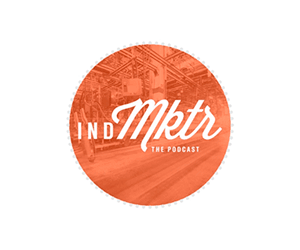Manufacturing SaaS products are becoming more and more popular as manufacturers develop their Industry 4.0 strategies and become more integrated, data-driven organizations. In the front of the house, there is an accelerated adoption of more “traditional” SaaS products, such as CRMs, to help manage sales and accounting functions.
But manufacturing SaaS products are also taking off on the shop floor, when you consider the increasing number of SaaS ERP and MRP solutions on the market, as well as SaaS tools for design and engineering, machine monitoring, metrology, and other functions vital to the core manufacturing process.
Many of the latter manufacturing SaaS products are being developed by companies with tenure in the manufacturing field, rather than by tech companies. This means that the developers have a lot of knowledge of the challenges their manufacturing SaaS is meant to overcome but they aren’t necessarily well-versed in the best practices of SaaS software customer experience.
Some of these companies seem satisfied to leave the customer in charge of the all-important renewal decision, but this hands-off approach often results in delayed or dropped subscriptions due to customer indifference or dissatisfaction.
So if you’re a manufacturing SaaS company, investing time and money in creating a strategic approach to customer renewal and retention is a necessity — and it begins with the software itself. In this article, we’ll cover how and why manufacturing SaaS businesses can — and must — focus on customer retention.
Why is Customer Retention Important for Manufacturing SaaS?
New customers are a boost to manufacturing SaaS company finances, but there’s little point to gaining new customers if you fail to keep them; those who leave your service are unlikely to return without an incentive. They also won’t recommend the service to other potential consumers, could defame your company’s image if they feel their business wasn’t appreciated, and damage your company’s reputation.
Meanwhile, repeat customers garner more revenue and can become promoters if they have a positive experience with your software, so keeping existing customers happy should be part of the business model for any manufacturing SaaS company.
SaaS Renewal Practices: Increasing Satisfaction Using Data Analysis
All manufacturing SaaS companies should monitor usage. The data can be used not only to remind clients when a renewal is going to occur long before the due date, but to optimize their plan for the future. Note this is not leaving the details up to the customer but proactively working with the customer and their usage data to improve and streamline the services they pay for.
This shows a client you care for their business and want them to be satisfied with the service they receive, increasing renewal and retention rates with minimal extra input. After all, the data is already there; it just needs to be analyzed and put to use. There’s plenty of software available that can track this usage and leverage it within effective customer retention practices, some of which are discussed below.
Automated Renewal Notices
Having an automated renewal notice system means never forgetting to remind a customer of an upcoming payment. These can be set up when a customer purchases a SaaS, unless updates are required at a later date. Renewal notices can be set to send months before a renewal date, giving companies — especially small ones with less working capital — time to find the funds without the stress of impending deadlines.
“With large consumer databases, it’s common for small B2B businesses to fall through the cracks. An automated renewal reminders mean no more forgotten contracts, less last-minute cancellations and happier consumers,” states Jenna Harrington, a business blogger at UKWritings and State Of Writing.
Contracts Calibrated to Usage
Data regarding how frequently each service is used, any that go un-utilized, and who accesses which services most frequently can be used to build a picture of a client’s habits. By implementing a customer access software system, all of this data can be collated into databases that can be searched and easily exported to other departments for analysis.
This allows companies to see how clients use their manufacturing SaaS, evaluate how appropriate an existing contract is for a client, and proactively contact customers before renewal dates to discuss services they could benefit from dropping or including in their next contract. Not only does this drive sales for new software, it also leaves consumers happy that their business needs are understood and being met.
Identifying Underutilized Features
Especially in complex systems, there can be features a client could benefit from, but haven’t yet used, either because they don’t understand how those features work or haven’t explored the full capabilities of the software. Knowing your customers’ usage patterns, their business model, and what they use the systems for means you can offer them advice on how best to utilize your manufacturing SaaS in ways they haven’t realized.
A phone call to discuss a feature that could retain them and boost their business efficacy shows that you value their company and business, not just their money. Even if they turn down the offer, the personal touch will leave a lasting, positive impression that’ll encourage the customer to renew their contract rather than move on to other services.
Automated Updates and Upselling
Knowing a service is actively being refreshed with updated features, new components and bug fixes engages customers in your development and growth. The subscription is more likely to feel worth their money, especially if they can contact you to suggest features. An automated email or SMS system can be used to inform clients of the updates, features and fixes constantly being implemented to improve the service they receive.
You can also use automated emails and SMS messaging to advertise additional features and engage clients in feedback opportunities, making their manufacturing SaaS subscriptions feel like a conversation rather than a transaction. The rapport creates a friendly atmosphere that’s more likely to result in a renewal and has the potential to boost sales.
Adding the Personal Touch to the Manufacturing SaaS Experience
While monitoring customer data can support giving your subscribers a more personalized experience, nothing quite substitutes for a personal touch born from your emphasis on understanding your customer’s point of view. Data can certainly help facilitate the types of activities noted below but they spring from a more fundamental customer-centric way of doing business.
First Contact
Whether it’s a new customer starting out or an existing customer subscribing to a new service, make sure to reach out to them after a few days, check they understand how to use the product effectively, and haven’t had any difficulties setting it up and are happy with it. This friendly, unsolicited conversation confirms you’re there for them if they encounter any problems and encourages interaction, which increases customer satisfaction.
“Calling a client and asking how it’s going is helpful for everyone; they can tell you if they’ve had teething problems and you can get them up and running. They can even ask any questions they’ve got but didn’t think were important enough to call about. It’s a win-win, honestly,” says Janet Handsen, an academic writer at Ukservicesreviews and Revieweal.
Department-by-Department Contracts
It’s likely your customers have departments that won’t use particular features that others have open almost constantly. Automated data capture and analysis of usage by department can allow you to streamline contracts for each facet of your client’s company, cutting out unnecessary functions on a departmental basis. This can make the interface for each department easier for them to navigate, save your client money and encourages them to renew their contracts based on the knowledge that you’re focused on optimizing their company’s efficacy and profits.
Employee-Centric Expenditures
Using contracts that acknowledge different departmental needs, it’s easier to forecast the expenditure reports a company can expect when renewal. As departments change or new hires join a team, costs based on the systems each employee intends to use are easier to project and adjust than company-wide contracts, allowing a more accurate projection for renewal cost and in turn, a client’s better understanding of their bill.
Customer Incentives
Nothing encourages consumers to remain with a company like an incentive. Whether it’s repeat customer discounts, loyalty schemes or access to special packages, having special privileges for those that stick with you is guaranteed to increase renewal and retention rates. These are less appealing to companies relying on revenue from predictable subscription rates, but they will maintain customer numbers and potentially increase expenditure on extra packages.
Manufacturing SaaS Companies Can’t Afford Not to Be Customer-Focused
Customers today expect to be taken care of. Manufacturing SaaS businesses must take note of this, especially because their businesses depend on an ongoing relationship with their customers. This is why a customer renewal and retention strategy is so important.
With plenty of competition, many customers won’t hesitate to change to a new manufacturing SaaS provider if they feel they’ll get better support and customer care elsewhere. As such, having the customer and the success of their business at the forefront of your business plan is more important than ever before for manufacturing SaaS companies.




